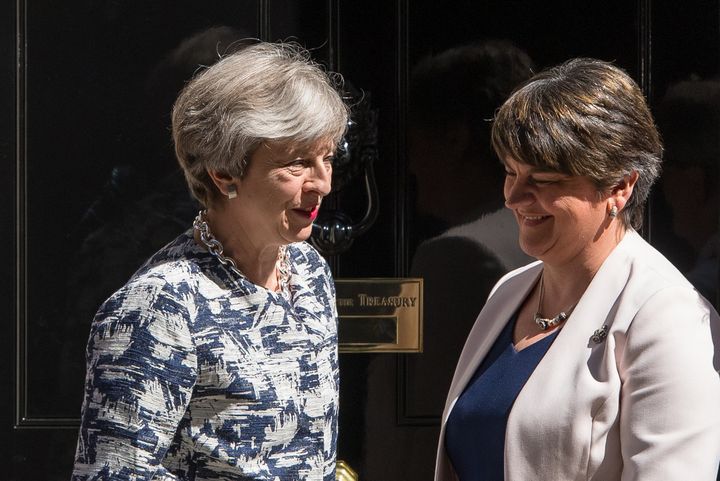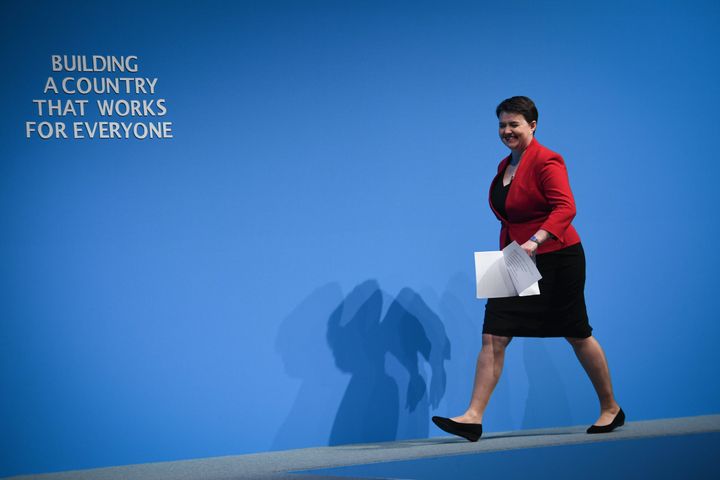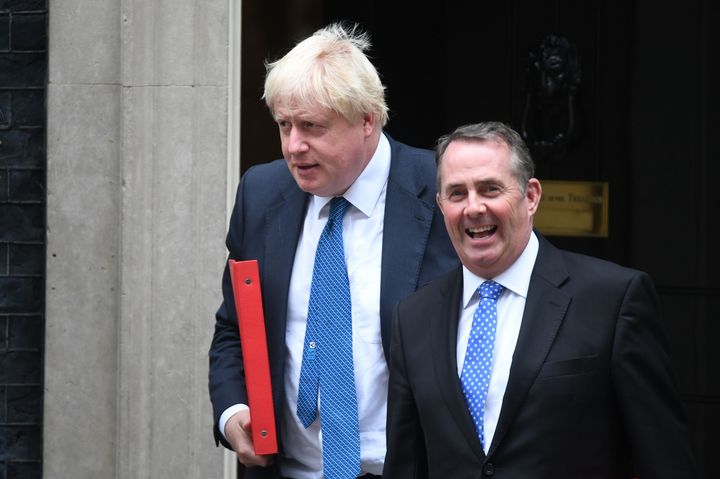Brexit is on a knife edge with Theresa May running out of time to meet a mid-December deadline to break the deadlock in talks with Brussels.
The Prime Minister seems stuck between a rock and a hard place.
The DUP has refused to sign off her plan for ‘regulatory alignment’ between Northern Ireland and the Republic of Ireland after Brexit.
But Dublin says the UK had signed an agreement and won’t let talks move on to trade unless it gets guarantees of no return of a ‘hard border’ between north and south.
What are the possible scenarios now?
1. HELP THE DUP

Theresa May blundered in not getting the DUP’s full agreement on “regulatory alignment” before putting it to the Irish government. Crucially, she needs the Northern Ireland party’s 10 MPs to maintain a Commons majority and meets them on Tuesday for urgent talks. It takes just a handful of dissident DUP MPs to scupper anything their leader Arlene Foster agrees.
If the DUP refuses to sign up to alignment, an alternative diplomatic phrase could be used. “Regulatory cooperation” or “regulatory equivalence” have been mooted by the province’s Institute of Directors. Both imply that future trade would be done on parallel lines rather than converging lines, which would keep both the DUP and Brexiteer Tories on board.
The real risk is that Dublin and the EU as a whole will reject such language as being too vague even given Brussels’ own likeness for fudge.
2. HELP DUBLIN

May could keep the phrasing on “regulatory alignment” that had been agreed with the Irish and the EU and which steered everyone towards an historic agreement, until the DUP found out.
But even if she abandons that language, she could come up with a written guarantee or form of words that there will be no return to “a hard border” (ie checkpoints manned by police or customs officials) after Brexit. Irish PM Leo Varadkar has shown flexibility but he too is in a minority administration and could be replaced by an even more hardline rival.
The danger is that the DUP view the shift as too much of a concession. There is also the genuine difficulty that a ‘soft border’ is too practically difficult to put in place in time for March 2019, when Brexit formally takes place. New technology to approve lorries that have already passed customs checks could be the answer, but will take time.
3. HELP DUBLIN AND THE DUP

The phrase ‘regulatory alignment’ could be written into any Brexit treaty as specifically affecting only the Good Friday Agreement on north-south cooperation on agriculture, a single energy market and animal health regulations. Even the DUP believes some current special relationships, which do not apply to the rest of the UK, are worth keeping.
But the bigger prize would to ensure those arrangements also apply to the UK. As Scottish Tory leader Ruth Davidson put it in a statement on Tuesday: “If regulatory alignment in specific areas is requirement for a frictionless border, then the Prime Minister should conclude this must be on a UK-wide basis”. This would ensure no ‘hard border’ between Britain and Northern Ireland.
The difficulty is that Davidson is a former Remainer and many Tory Eurosceptics - while they want an all-UK solution - won’t tolerate any language that suggests the UK will not be free to diverge from Brussels rules when it likes.
4. DO NOTHING

Doing nothing is, contrary to popular belief, always an option. A handful of Tory MPs think a delay would be worth it just to prove the seriousness of their determination to help the DUP – and think Brussels’ own self-interest in needing a smooth Brexit is the trump card. But failing to get an agreement on Northern Ireland would mean that May can’t move on to ‘Phase 2’ of the Brussels talks this month. This second phase is when the UK can finally talk about a post-Brexit trade deal with the EU and the two-year transition that May wants to achieve after 2019.
If the logjam continues, the delay could last months. Irish PM Leo Varadkar warned last night that if the UK abandoned the agreement, the whole issue would be postponed until next February and it could take even longer. Some in Brussels have even drafted plans for the collapse of the entire talks, preparing for a ‘no deal’ Brexit with the UK on World Trade Organisation tariffs.
Both Liam Fox and Boris Johnson have joined other Brexiteers in saying they have no fear of WTO-only rules. They can argue that with the EU’s Michel Barnier no offering little hope of a ‘bespoke’ trade arrangement, the PM was right all along that it’s better to have no deal than a bad deal. But for May such an outcome would be a political disaster as the majority of her Cabinet and her MPs don’t want such a ‘hard Brexit’. Failing to get a deal this month could even trigger fresh moves to replace her as PM.
